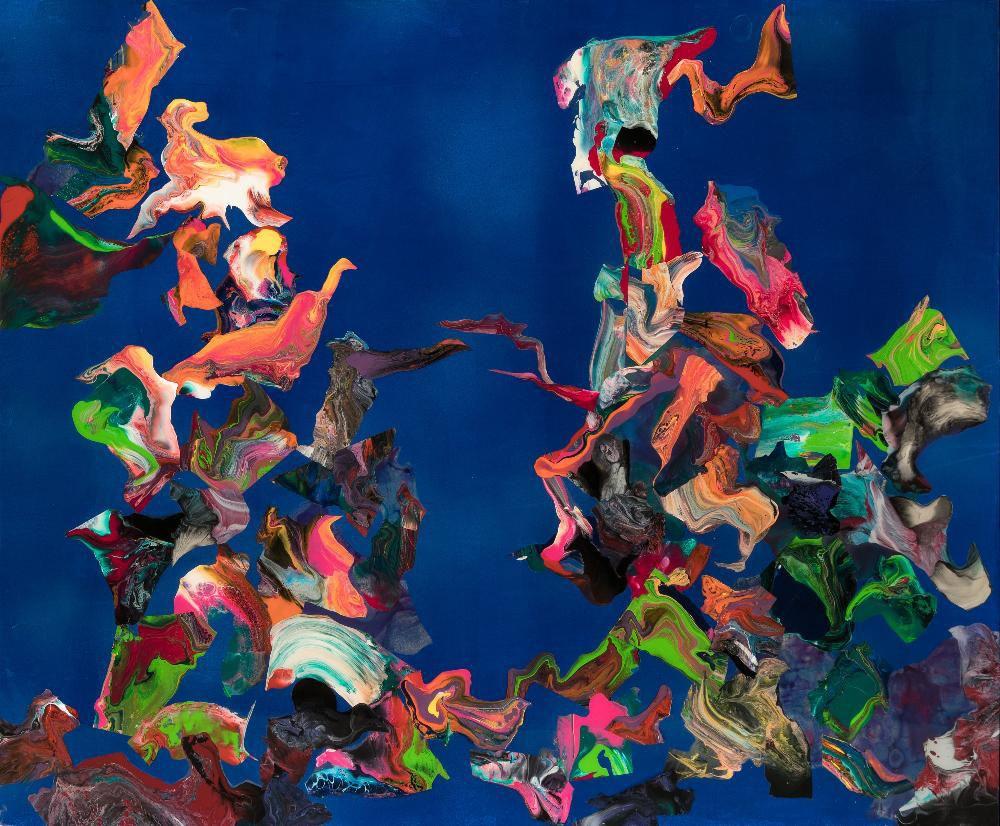‘Ebb and Flow’ exhibit highlights artist’s creative journey, return to fine arts

GVL / Courtesy – gvsu.edu Ebb and Flow: Explorations in Paintings by Herbert Murrie
Jan 8, 2018
Creators of all kinds follow a similar process of being inspired, creating, revising and repeating until the product is satisfactory. For artist Herbert Murrie, his entire artistic career focuses on the cycle of creation and revision, a notion that Joel Zwart, Grand Valley State University curator of exhibitions, said will be captured in “Ebb and Flow: Explorations in Painting by Herbert Murrie,” opening Monday, Jan. 15, as the GVSU Art Gallery’s next exhibition.
While the exhibit opens Jan. 15, the university’s Art Gallery will be hosting Murrie and his wife, as well as a virtual reality Tilt Brush station for participants to paint in 3-D, on Thursday, Jan. 18, Zwart said. The work featured will range in style, medium and topic, ultimately showcasing the movement in Murrie’s creative process.
“One of the paintings in (the exhibit) is a very realistic painting that starts to evolve into abstraction, and then the abstraction evolved into what you might call a ‘wall sculpture’ that has to do with a very political nature—everything from terrorism to climate control,” Murrie said.
The idea to have the exhibition originated in 2015 with the donation of 15 art pieces by Murrie and his wife. The gallery not only serves to thank the Murrie family for its donation, but it will also serve to create a timeline to chart the creative metamorphosis within Murrie’s career, Zwart said. Featuring both donated work created around 2011 and new pieces, the gallery will ultimately highlight Murrie’s journey as an artist, Zwart said.
Henry Matthews, director of galleries and collections at GVSU, said the initial connection between the Chicago-based artist and GVSU was made by alumnus William Lieberman, who runs the Zolla/Lieberman Gallery in Chicago. On a trip to the gallery, Matthews and Murrie were able to connect, eventually leading to a trip to Murrie’s studio and the offer to donate the group of paintings.
“I liked the energy, the abstraction,” Matthews said. “His work—not his later, but his earlier—is richly abstract and with beautiful colors and beautiful composition. … I went to visit his studio, and I saw what he was working on, so I was very taken by the work itself.”
Zwart said motifs and creative styles are seen throughout all of Murrie’s diverse work, in keeping with the theme of the “ebb and flow” of the creative process. Zwart also said that while Murrie can control some aspects of his art, social conditions, emotions and the act of creating are all up to “chance.”
“His work has always been very abstract, very colorful, very driven by what he calls ‘chance’—the idea that you’re working there, and that as you’re working, things happen,” Zwart said. “So, the way that the painting comes about happens as the artist is working there. … He works from a space where the work is flowing out of him.”
Murrie said he began his education with his sights set on being a traditional artist but that he shifted toward a career in advertising and design for financial stability. Having used the skills he gained in the industry, Murrie credits his artistic abstraction to his cumulative knowledge as a creator, regardless of the field.
“I’ve always felt that the education that I’ve had in design simply evolved into the more fine arts with a knowledge of shapes, forms and marks that I had created as a designer,” Murrie said. “It created the abstracts that would involve those forms and shapes and marks, and it all came out of my basic design training.”
While the theme of “ebb and flow” pertains to Murrie’s work itself, it is also a reference to his interests beginning as an artist, moving to design and advertising, and ultimately returning to creating art. To Matthews, that journey should serve as a reminder to art students that their opportunities are diverse and encompassing.
“Sometimes, your parents are going to say, ‘You’re going to be an art major? Well, how are you going to make a living?’” Matthews said. “Well, here’s an opportunity to look at an artist and see that he made a living in various categories of his chosen field. There’s a great lesson there for students.”
Murrie said he strives to create works that leave viewers with a newfound feeling, whether it’s a “wall sculpture” based on abstract forms or a collage in his issue-based “New Inspirations” works. Regardless of what that feeling is, his goal unites all of his pieces the gallery.
“Whatever the abstractions are, … what I hope to create is an emotion,” Murrie said. “In other words, not just staring at it and saying, ‘Uh huh,’ but feeling something—creating either a feeling of peace or happiness or sadness.”

























